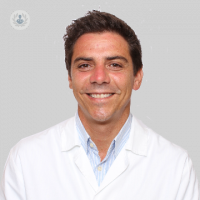Treatment for patients with sleep apnea
Written by:Sleep apnea syndrome is a very frequent disease, caused by a mismatch between the need for air of a person, and the amount of air that can pass through the upper respiratory tract and that manifests during sleep .
In periods of deep sleep and REM sleep, the relaxation of body muscle tone is very obvious and causes the muscles of the pharynx and larynx to relax, causing in some people a collapse of the air passage, which may be total (apnea ) or partial (hypopnea). This relaxation occurs in all people, and throughout the night, almost all human beings go through periods of hypopnea and even apnea, without affecting our bodily functions or the quality of sleep.
A person is considered to have a sleep apnea syndrome when he has more than 10 apneas or hypopneas per hour of more than 10 seconds duration. When these figures are exceeded, the apneas are accompanied by a decrease in oxygen in the blood, an alteration of the heart rate and in most cases of an unconscious arousal called "arousal", which causes an interruption in the normal rhythm and the cycles of sleep causing the main symptom of apnea, drowsiness during the day.
These symptoms, if left untreated, can lead to very severe problems, from arterial or pulmonary hypertension to heart disease with heart attacks or angina, traffic or labor accidents and cerebrovascular diseases.

Causes of Sleep Apnea
The obstruction of the upper airway is due to obstruction at the level of the nose , the palate , the tonsils or the base of the tongue. There are factors that favor this obstruction, mainly the obesity in its multiple forms (by excess of ingestion, endocrine, metabolic or hereditary genetics) and the anatomical alterations like the hypertrophy of tonsils or of tongue, the narrow palates, the deviations of the nasal septum or alterations of the maxillary or mandibular bones.
Statistics indicate that at least more than half of patients with sleep apnea have at least one degree of obesity.
Symptoms of sleep apnea
There is a set of symptoms that make us suspect that a patient has sleep apnea, which if given together can also indicate the existence of severe sleep apnea, and are:
- Important snoring , daily and for most of the night.
- The presence of drowsiness during the day.
- The perception of apneas by another person , usually the couple, family or roommates.
- Sudden awakening with a choking sensation.
How can sleep apnea be prevented?
Although it is a severe problem, fortunately it can be prevented through various strategies.
The most important would be control of body weight to maintain a body mass index below 27.5. You should also avoid alcohol or sedative or hypnotic drugs. In addition, it is important to avoid sleeping in the postures that make snoring more likely, mainly on your back.
The specialist in Otorhinolaryngology should also favor the passage of air through the nose instead of through the mouth, through nasal washes or drug instillations nasal route.
Treatment for sleep apnea
Sleep apnea is not only possible, but must be treated properly.. It is estimated that almost half of people with sleep apnea are undiagnosed and therefore untreated. This produces a risk of suffering important diseases derived from the lack of nocturnal oxygenation and an important disorder in the quality of your sleep.
For the diagnosis and appropriate treatment, the ideal is to have a Sleep Unit formed by different specialties, focused on a sleep specialist (preferably a clinical neurophysiologist or a pulmonologist) and a sleep specialist surgeon, who is usually an otolaryngologist with specific training in this field.
Sleep apnea is multifactorial and therefore there is no single treatment for all patients. Typically, patients need several techniques or therapies to adequately treat their sleep problem.
For the proper diagnosis, we have to combine two analyzes, one functional that is video-polysomnography and another anatomical one that is the somnoscopy. The combination of these two tests contributes not only a diagnosis of sleep quality and the severity of apnea, but also allows to identify very precisely the places of obstruction to determine the most appropriate treatment.
Within the treatment can be used continuous pressure devices in the airways to keep the pharynx open during sleep. The best known of these is CPAP, which can be used in combination with positioning pads, advancing mandibular devices, weight loss therapies and drugs or devices to expand nasal breathing.
In selected cases, airway surgery in its multiple variants (nasal, pharyngeal, tongue-base or maxillo-mandibular) may cure or significantly improve apnea.


